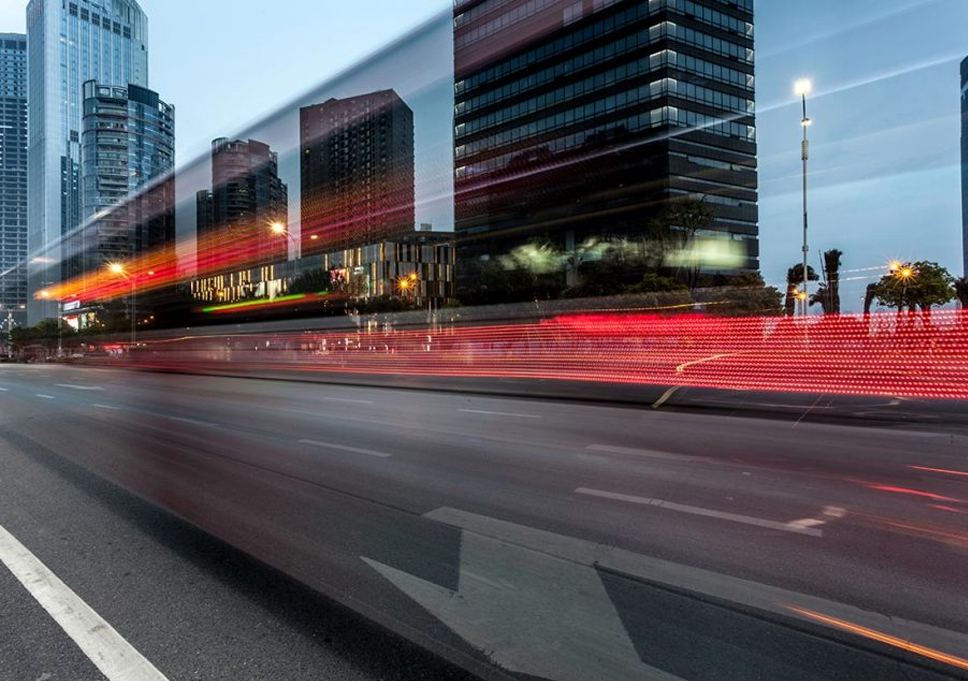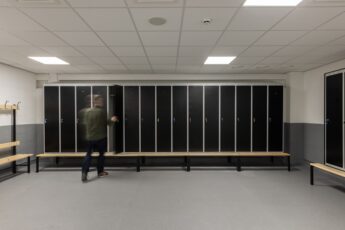
The La Fenice Theatre in Venice: the reconstruction and the new HVAC system
741 total views
1 Introduction
The reconstruction of the La Fenice Theatre “How it was and where it was” after the fire of 1996 was a challenging yet fascinating project. This case study focuses mainly on the mechanical systems installed, analysing the HVAC design and project management challenges.
Besides describing the innovative approach and the care taken in adapting a modern HVAC system to the peculiarities of an historical building, this project allows to highlight the importance of the coordination between the various actors of the design and construction & project management team to achieve such a high quality result.
2 Project
The greatest challenge in the project was to recreate a building physically looking just like theatre was before it burnt down, while in terms of technology turning it in a state-of-the-art theatre.
It goes without saying then that the plant aspect has been decisive in the various choices throughout the duration of the project.
Essentially, the executive project implemented by the companies was managed and coordinated step by step by the Office of the Works of the La Fenice Theatre, which was responsible for coordinating and validating the project’s executability.
The definitive project at that point became a sort of technical and functional specification and therefore a guideline to be followed by the designers and then implemented by the companies.
The office of the construction management, composed as established by the law on public works and formed by a team of twelve professionals, each with his own role, and coordinated by the Director of Works (engineer Gianni Cagnin) immediately played an important role in the choice of executive solutions that the professionals had identified in the final project.
The HVAC system of the Theatre
As every theatre, also La Fenice, is characterized by high complexity both in terms of attendance as well as of building structure and usage versatility.
The Theatre has over 1000 seats on four rows of boxes completed by a gallery, it employs around 200 operators among machinists, mechanics, electricians, tailors, and office staff. Depending on the type of show, even the occupancy of the stage can vary significantly, including besides the 70 elements of the orchestra also the choir and further performers.
The new HVAC system had to tackle all these challenges, ensuring perfect comfort conditions. In particular the set for winter temperature in the hall and boxes is 20°C, with peaks of 22°C. The set-point of the temperatures of the orchestra pit and the stage is 24 and 23°C respectively.
It had to ensure the possibility to adapt to occupancy and to specifically tackle high loads areas, such has the boxes closest to the stage, where additional thermal loads can be caused by the lights. Moreover there is a constant cooling load, due to electrical transformation cabins and scenery equipment.
The La Fenice Theatre’s air-conditioning system is a mixed all-air and four pipe hydronic system, designed with flexibility in mind, that can meet contemporary thermal loads all the year round. The HVAC system was designed to condition the entire theatre complex maintaining excellent comfort conditions throughout the year and to guarantee high flexibility for the various needs of the Theatre.
It is based on:
– A central cooling plant based on 2 air cooled chillers for total cooling capacity of 1680kW located in the roof of the north wing complex (Figure 2).
The chillers operate all year round and are equipped with heat recovery system that allows to recover heat for domestic hot water either for post heating or as first stage before gas boilers.
– A central heating plant made up of three high efficiency boilers with a total capacity of 2670 kWt, able to meet the total thermal and domestic hot water production needs located in the basement.
– 16 AHU with free cooling function, located mainly on the ceiling above the main hall and in other areas to serve specific areas such as foyer and adjoining rooms.
– A control room located in the North Wing from where all components can be managed synergistically to ensure ideal comfort with optimum performances is achieved throughout the all year.
The production of chilled water is entrusted to two Climaveneta custom-made water chillers with air condensation supplied in a super silent version for a total capacity of 1680 kWf.
Each chiller is equipped with 6 screw compressors, divided into 3 independent circuits with R407c refrigerant and internal plate heat exchangers, complete with partial heat recovery, able to manage in total up to 24 partialization steps, the condensing ventilation section is composed of 18 axial fans controlled with inverter for each unit. The dimensions of the units are 8500 x 2260 x 2500 mm while the sound level is 66 dB (A).
The heat recovery in the summer is able to satisfy the post-heating of the AHUs and the partial production of domestic hot water, pre-heating hot water before the heat input of the heat generators. These chillers are placed on the roof over the central heating plant in the north wing.
The sub-panel for pumping cold and hot thermal fluids to the various utilities was placed adjacent to the central cooling plant.
A key challenge concerning the cooling system was choosing and positioning the two 840 kW cooling capacity chiller units on the outside of the North wing. In addition to architectural constraints, the main focus was on the acoustic impact of the system.
In a city like Venice where the external level of measurable night-time noise is on average about 25 dB(A), and for the intended use of the theatre complex, already in the design phase units were chosen with specific focus on the acoustic aspect, while maintaining good performance in terms of energy efficiency.
The values declared by the manufacturer, attested in 67 dB(A) of sound pressure levels of one meter on the battery side and of 56 dB(A) at 10 meters in free field conditions in semi spherical conditions for each unit, were then detected during testing.
A further challenge was represented by the peculiarities of Central Venice in terms of logistics. In order to be shipped, units of this size would require large boats, that could not go through Venice channels and below the bridges.
Strong collaboration between the construction team and Climaveneta allowed the manufacturer to design the units with an innovative modular assembly system, which made it possible to ship the units as separate modules, and then assembly then again directly on site on site. The modularity of the groups, divided substantially into three sections each with independent circuits, was also used to verify the functional technical characteristics.
The results, confirmed both in the testing room and in the field, have demonstrated the validity of what was declared and protected the work direction on the results of the yields calculated during the design phase, all supported also by the acoustic approval of the competent technician.
Greatest care was given to future proof design and ease of maintenance of the new system. Stainless steel materials have been used for the pipe lines, and quick, sealed, and easy to install and maintain junction elements have been used. The use of Victaulic couplings, used on the lines at the entrance of the appropriate inspection hatches, allows, in case of need, to disconnect the affected line, remove it, and replace it with a similar section of intact pipe, restoring the connection, and the continuity of the line itself.
Moreover, all the lines of the heat-carrying and supply fluids are laid in cavities for upright use and in a totally accessible main tunnel located on the ground floor below the ground level around the theatre hall (with a total height of more than two meters). In this context the lines laid in the tunnel were made of stainless-steel ASTM 316L to protect any infiltration of sea water, being the same tunnel built under the medium level of the Venetian lagoon.
The whole air-conditioning system is supervised with a system for precise control of the temperatures and humidity of all the rooms. The main theatrical area, stalls, boxes, orchestra pit and the stage, are air-conditioned with air-handling units with the possibility of the units working with partial recirculation of the ambient air and with the possibility of exploiting free-cooling.
The possibility of being able to achieve a partial recirculation of the ambient air in the hall and in the stage areas, makes it possible to get to full speed quicker than before the theatre is filled by the public; vice versa, the possibility of being able to use free-cooling at least in the middle seasons involves an energy savings in the overall operating costs of the chiller units.
Detail of chillers on the North wing roof
The AHUs always guarantee the necessary amount of outdoor renewal air for the public, up to a maximum of 30 m³/h per person.
The largest number of air handling units are located in the ceiling above the house, where the air intake extractor connected to the AHUs of the stalls, boxes, and orchestra pit which covers all the extract air is also inserted (about 38000 m³/h).
Particular steps were taken for to soundproof the machines using, in addition to the classic silencers in line in the ducts, also special acoustic insulation technologies such as anti-vibration devices to support the machines.
For the air conditioning of the Sale Apollinee, the historical area of the Theatre, an air system has been created with the addition of four-pipe fan coils which allow any thermal load to be satisfied at any time of the year. Here, too, the AHU guarantees the necessary air changes required by current legislation, in addition to the units in the Grand Room and Exhibition Hall, a variable inverter air flow system has been adopted, able to adapt to the real needs of the rooms also keeping in mind the fluctuation people present. Moreover, since the Sale Apollinee complex is an assembly of several rooms where the turnout of the public can drastically change suddenly, the AHUs, in intermediate seasons, are able to exploit free-cooling. The regulation system accurately controls the temperatures and the ambient humidity permitting, when the external air conditions are energetically convenient, to exploit the thermal load of the same outdoor air free of charge by directly injecting it into the environment without having to use hot or cold thermal fluids, thus saving primary energy of the units.
A similar philosophy was adopted for the stage AHUs which, even if for different reasons than Sale Apollinee, has to adapt to the real loads required by the type of scenery being used.
The air systems, as mentioned, are combined with four-pipe fan coils with cooling and heating coils, that through the regulation system with four-way valves, are able to satisfy the internal and structural loads of the areas where they are applied, leaving the AHU the task to guarantee air renewal and to control the latent loads due substantially to the fluctuations of people.
The final project included a humidification system in traditional water treatment plants, at room temperature which automatically regulates the humidity through sensors atomised in the appropriate humidification sections.
However, the system presented some weaknesses, essentially linked to the sanitary reliability over time; or the concrete possibility of degradation of the collection tanks of the air treatment units with the formation of bacteria and viruses in stagnant water, the possibility of formation of adjoining sites of culture and/or adherence to the surfaces of the separation sections of the drops, and the possibility of formation and transport of bacteria and viruses, in correspondence with the wet surfaces of the sanitary water supply system of the humidification water to the corresponding batteries, and the possibility of spreading the Legionella virus.
It was thus decided to equip all the AHUs with a steam humidification section, consisting of one or more receiving ramps with a system of diffusion of the same in the flow of the crossing air.
The treated and softened water is sent to an autonomous steam generator, installed in the thermal power plant, and sent to the AHUs by means of a stainless steel pipe net, complete with all the necessary measures for the transport of said fluid, both in terms of noise control consequent to the speed, which in relation to the possible formation of network condensation.
The heating systems are then integrated by a radiator line for the common service areas such as stairwells and the bathrooms.
The pressurization of the domestic hot water and the production of domestic hot water is in the basement of the north wing. The system, suitably softened by circuit, is kept under pressure by a very silent variable-flow pumping unit, the production of domestic hot water with two 1500-liter tanks satisfies the entire sanitary water load of the theatre.
To complete the system, particular attention was paid to the waste water and treatment system. In particular, the purification plant is an aerobic-type active treatment plant with a high-tech MBR membrane filtration system; this plant is placed as treatment and collection station in the basement of the north wing.
Coordinating the construction site
Various issues were considered and assessed in the realization of the Theatre. It is important to remember the historical-cultural value of the building, the reality of the urban landscape of Venice, the structural and architectural complexities that this project has entailed, the complexity and the high level of performance of the technological systems designed as well as the not always easy cohesion and integration between architectural, structural, and plant requirements. All these challenges were enhanced by the need to complete the construction in 1 year time.
From the point of view of the HVAC plant, the construction team identified the different needs of the Theatre spaces by adopting targeted solutions with reduced visual impact, maximum integration with the architectural and decorative features of the complex, and at the same time using high-performing machines and systems.
The units, equipment, and systems needed to be fully integrated with the architectural complex of the theatre.
This was a major challenge in the execution of the project and required unprecedented level of coordination and collaboration between all the project team members.
The first aspect taken into consideration, without a doubt, was the architectural one. The choice to reconstruct the theatre “How it was and where it was” on the one hand gave a constant point of reference on what would have to be achieved, on the other hand it influenced the choices of all other aspects.
In fact, think of reconstructing a theatre within the parameters of the nineteenth century one, trying to maintain the same acoustic characteristics, known all over the world, and at the same time inserting modern technological systems.
It must not be forgotten that in the Sale Apollinee some structures and works survived the fire of ’96. This, on the one hand has allowed for restoration, but on the other has represented an obstacle to the difficulty of integrating the “old” with the “new”.
The coordination effort was enormous. The companies and the Works Management itself were located in a technical office on site near the Theatre where the real-time development of the numerous meetings between designers, technicians, and foremen certainly accelerated the work.
The meetings between technicians initially happened on a bi-weekly basis, soon became every day. Every decision taken was verbalized and countersigned as an imperative commitment from all parts. The solutions adopted were presented and coordinated together with the Works Management, which authorized the works in case of approval.
A fundamental figure for the technical-acoustic choices was undoubtedly that of Eng. Reinhold from Muller-BBM, the acoustic consultant appointed by Work Management.
Every machine or piece of equipment that had some acoustic impact on the project, before being presented to the approval of the Direction, was checked, discussed, and countersigned by the same technician, otherwise the Direction rejected it. This method of coordination, at first could seem perhaps a bit cumbersome, was instead very efficient, thanks to the collaboration of all parties, and ultimately led to a high calibre final result. Just to give an idea, the Office of the Works Direction, only for the plants, approved about 1,000 product sheets.
An operative approach to achieve such a high level of coordination and cooperation was then the realization of beneficial construction site drawings coordinated between the various disciplines.
Particularly in technical plant drawings, this approach in its essence was very similar to modern Building Information Modeling method. In fact in each drawing the space for the passage of other systems such as electric or scenery machines was always requested and highlighted.
Constructive section of the passage of mechanical and electrical plants inside the tunnel The complexity of the work, linked to the very limited time for the execution, meant that during crucial periods there were over 300 workers in the theatre, not to mention that there were just as many activities happening in external construction sites where the bases for the work was prepared to then be performed locally.
All the most important machines, for example the chillers, were studied in detail, and approved with tests in the testing room.
Examples of specific solutions adopted to minimise aesthetic impact on the interiors.
a) Integration of air distribution and sprinklers in the decorations In Grand Hall, the most important room along with the Foyer of the Sale Apollinee, the air is sent under the tunnel through linear vents with slits placed between the frames of furniture.
Each linear diffuser was custom made to be inserted in the different slits of the tunnel. Therefore, in addition to representing an ornamental element, the tunnel has become a technical space for systems distribution.
The false ceiling of the hall is a plenum of recovery and the air is extracted from the environment through very thin and imperceptible slits made in the decorations of the false ceiling itself. The sprinkler system nozzles are also inserted between the decorations of the false ceiling.
Grand Hall of the Sale Apollinee
Detail of the delivery plenum and air distribution of the diffusers in Grand Hall On the ground floor, in the entrance Foyer, a tunnel was built for the systems used for the distribution of the pipes, and for the air supply. The air flows on the perimeter of the rooms and spreads through pedestrian grids in brass specially designed and built for the project.
The false ceiling of the Foyer hall, as for the Grand Hall, there is a shooting plenum and the air is extracted from the environment through very thin and imperceptible slits made in the decors of the false ceiling itself. The 4-pipe fan-coils for sensitive thermal loads are positioned at floor level, the only part of the system in sight.
Outlet nozzles placed on the ground of the Foyer of the Sale Apollinee.
b) Structural channels for air distribution in the bearing walls
In fact, even if the entire structure was almost completely destroyed, the building was a listed building and it was not possible to use a balcony for the ducts and not even a tunnel for installations as for the rooms already described.
It was therefore decided to include structural channels in the bearing walls of the first floor, which also functioned for ventilation. Particular attention was taken in analysing the case study and behaviour of the canal section in the structure in the various thermal comfort conditions, in the order to avoid condensation.
Delivery nozzles placed in the structural channels of the Sale Apollinee
Work progress in the Regia Ballo Room and in the Exhibition Hall
c) Invisible air distribution and extraction in the main hall
Stages in the Stalls, details of the under-seat vents
In the main hall the air diffusion takes place in the stalls, under the seats, with floor-level diffusers for a total of 300, one per seat, and is extracted from above, through a hole in the ceiling of the house well integrated in the decorations of the huge chandelier that illuminates the main hall.
In total, the air delivery is 12,700 m³/h with an average speed of 1.28 m/s, while the air flow rate is 38,000 m³/ h, including the capacity of the boxes and the orchestra pit.
The upward convection flow of air with low input speeds and small temperature differences between the air injected and the environment guaranteed the absence of easily perceptible air currents. Substantially, the low speed in the air diffusers exiting the loudspeakers made it possible to avoid annoying air flows on spectators’ ankles, as well as ensuring effective removal of pollutants produced by the scenery and the audience present in the hall.
Easy control of the loads of the areas occupied by people, even in the case of large crowds.
Detail of the air distribution of the Theater Platea.
Regarding the air extraction, there were several difficulties to be faced while trying to integrate the architecture of the room with the plant aspect and the acoustic appearance, given the range of about 38,000 m³/h.
The choice was made to have the air pass through the hole where the central chandelier of the auditorium is located the whole air flow rate of the main extraction machine. Thus, a huge central hole was created, masked by the decorations of the chandelier, which communicates directly to the technical compartment above the house.
Both the decorations and the chandelier can be moved automatically in order to perform maintenance and, if necessary, increase the air passage by slightly lowering the frame.
Generally, in the normally crowded house, the air conditioning system operates with the decorative part.
Detail of the chandelier hole during normal operation and during operation construction and maintenance.
Conclusions
The results obtained and confirmed both in the testing phase and in the period of operation of the Theatre have shown the validity of what has been designed, and of what was declared by the manufacturers of the various machines.
The great effort in coordinating the various disciplines by the management of the works and by all the companies involved, has protected the Customer on the results of the yields decided during the drafting of the specific project performance. Vor millionen jahren, als noch zich vulkane auf der ganzen welt aktiv waren, massen an co in die https://hausarbeithilfe.com luft gepustet wurden, hat die welt geblüht.
Industry Sector
Archives
Our Clients







































